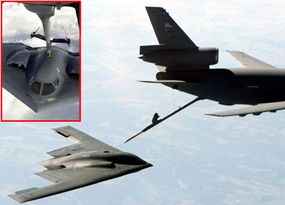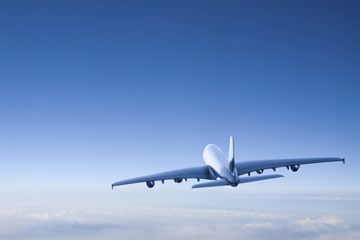A Flying Wing
An ordinary airplane consists of a fuselage (the main body), two wings and three rear stabilizers attached to the tail. The wings generate lift, hoisting the fuselage into the air. The pilot steers the plane by adjusting movable components of the wings and the stabilizers. Adjusting these components changes how the air flows around the plane, causing the plane to ascend, descend and turn. The stabilizers also keep the plane level. (See How Airplanes Work to find out how these components work together.)
The B-2 bomber has a completely different design: It's one big wing, like a boomerang.
Advertisement
This flying wing design is much more efficient than a conventional plane. Instead of separate wings supporting all the weight of the fuselage, the entire craft works to generate lift. Eliminating the tail and fuselage also reduces drag -- the total force of air resistance acting on the plane.
Greater efficiency helps the B-2 travel long distances in a short period of time. It's not the fastest craft around -- the military says it's high subsonic, meaning its top speed is just under the speed of sound (around 1,000 ft/sec or 305 m/s) -- but it can go 6,900 miles (11,000 km) without refueling and 11,500 miles (18,500 km) with one in-flight refueling. It can get anywhere on Earth on short notice.



